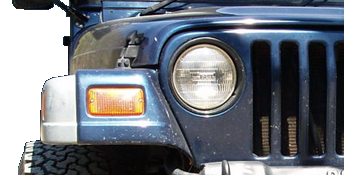catfishblues
Well-Known Member
- Joined
- Jul 26, 2005
- Location
- Pfafftown, NC
Also, check the breaker and wire on your 220v source. A dryer receptacle won't cut it for many 220v welders. You should really put them on a 50A circuit.

Luckily my barn has a panel half unused and I have 100amp feed run to it. In a perfect world i'd already have a 50 amp fuse and a plug in a good location. My world isn't perfect so that would be additional cost although less work than for some.Also, check the breaker and wire on your 220v source. A dryer receptacle won't cut it for many 220v welders. You should really put them on a 50A circuit.
So I take it jb weld isn't a good plan B.

Nice try.To each his own, maybe if u have nothing nice to say then shut ur mouth
I have been an ASME welder for 30 yearsI was just giving advice of my exp. and u insult me. Real pro for a mod
Takes a great deal of finess, but I like to do pans with overlapping flanges and plug welds like a factory job, then seem seal. None the less a 3/32 rod in something like a 6013 works well. It doesn't penetrate like a 6010 has softer arc and doesn't mind a bit of paint, rust, grease, or zinc oxides found in alot of car sheet metal. Not always easy but you can take a block of bronze and use as a backer and it will catch any burn through and allow the metal to cool and not fall through making a hole (I've done this with Mig too). Welding a pronounced bead isn't needed on sheet metal anyway, fusing with alittle fill is plenti strong and allows for fleability of the joint. Big or thick welds in the wrong places causes stress risers and does just as much harm as good for a structure. Good rule of thumb is a welds needs to be no thicker than (cross section) than the thinnest member being joined. I 've welded many pieces up for farmers and the like that were rotten thin and nearly rusted out. Mig doesn't like rust at all, so when the cheap man wants his rotten stuff patched, a stick will get it welded without spending a bunch of time cleaning the material! I got a friend who runs a diesel shop that his dad started 30-40 yrs ago. Every 3/4 and 1 inch pipe it the place was stick welded for his air lines. I guess they have kept really good dry air since the pipes haven't rotted. But before Mig it was either stick or oxyfuel for just about everything. Really want to start with pure grass roots heat, liquid metal, a puddle, and filler? Let me teach you to Oxyfuel gas weld!Thanks Warrior. Excellent feedback and I appreciate the offers for more info. One question I have is when you want to go from floor pans to sliders can a stick welder really handle that? My understanding was stick welders really only work good on the thicker stuff. I know some floor pans are more like beer cans but that is one thing I could see me wanting to be able to do. Like a gas tank relocate or a frame through cage, etc.
That's awesome. On location and reputation alone I'd like to take a class from you. Regardless I'll need to check out your shop.
.......... Really want to start with pure grass roots heat, liquid metal, a puddle, and filler? Let me teach you to Oxyfuel gas weld!
and you will learn great patienceThis, it will prepare you for all other processes.


